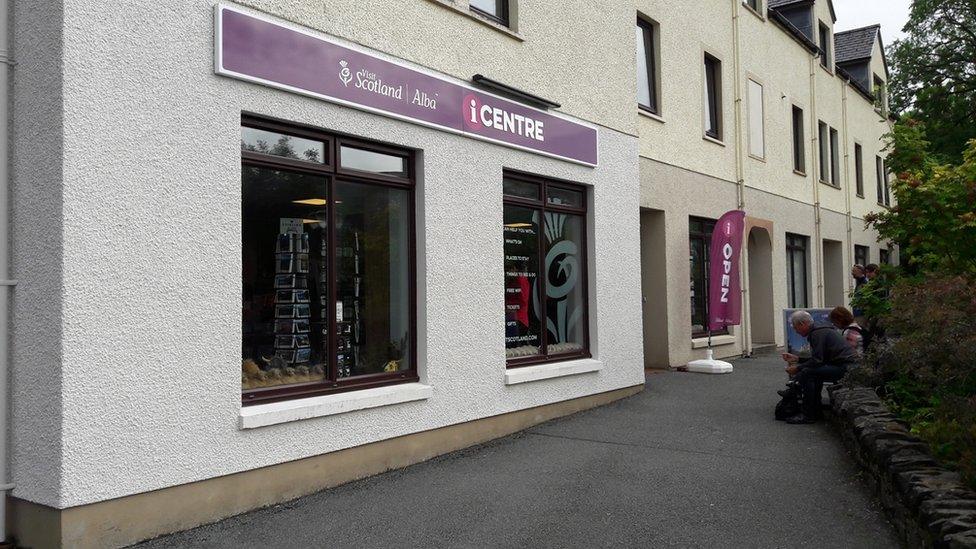VisitScotland to shut 39 tourist offices
- Published

The visitor centre in Portree is among those being extended into a regional hub
Nearly two-thirds of Scotland's tourist information centres are to close as part of a "radical" plans to change the service.
VisitScotland said 39 of its 65 centres would shut over the next two years, leaving 26 "high impact regional hubs".
The organisation said the decision was in response to the popularity of digital services among visitors.
Staff affected by the centre closures are to be offered redundancy packages or the chance of redeployment.
Digital activity
Centres earmarked for closure include those at Edinburgh and Glasgow Airports and Tyndrum.
Decisions regarding the location of the regional hubs in Dumfries and Galloway, the Scottish Borders and the Outer Hebrides are to be made following a consultation with the local tourism industry over the coming months.
In the meantime, sites located in Peebles, Jedburgh, Gretna, Kirkcudbright, Dumfries, Tarbert (Harris) and Stornoway will continue to operate as normal for now.
VisitScotland said there had been a significant decline in the number of tourists visiting their information centres, amounting to a 58% drop in footfall over the past 10 years.
They also said that two out of three visitors to Scotland were now accessing information online and that £10m would be invested in digital activity and the new regional hubs.
The 26 regional hubs will operate in locations of greatest visitor demand and offer information about attractions across wider regions, said VisitScotland.
The current number of information centres will be replaced with 1,500 "information partners", made up of local businesses, such as bed and breakfasts, distilleries or local retailers.
Four so-called "Coo Vans" will also tour the country with tourist information, attending events or popular sites, as part of the strategy.
A VisitScotland spokeswoman said: "Our staff are important to us.
"It's our clear goal to minimise job losses in the changes we are making. As well as offering voluntary redundancy, we will offer a chance to learn new skills or move to another office where feasible."
The news comes as Scotland's historic sites recorded their busiest summer season on record.
Figures from Historic Environment Scotland showed that there were 3.8 million visitors to Scotland's paid for-attractions, representing a 20% increase on the previous year.
'Owning a smartphone'
Lord John Thurso, chairman of VisitScotland said: "It's time to switch our focus and investment into new and diverse initiatives to ensure we are reaching as many people as possible with the information they want, in the way they want it, when they want it.
"With three in four adults now owning a smartphone, a key focus is ensuring our digital communications provide succinct inspirational and informational advice to visitors at every stage of their journey.
"However, we know that speaking to locals is also important to our visitors, and with our 26 high footfall travel hubs, over 1,500 VisitScotland information partners and our team of outreach staff travelling around the country, it means that there is always advice on what to see and do and where to go wherever people are."
Marc Crothall, chief executive of the Scottish Tourism Alliance, said that despite the drop in the number of information centres, there would be more places for visitors to access information.
He added: "We also believe that VisitScotland will manage these changes in a sensitive way, ensuring that alternatives are in place to help manage any local concerns."